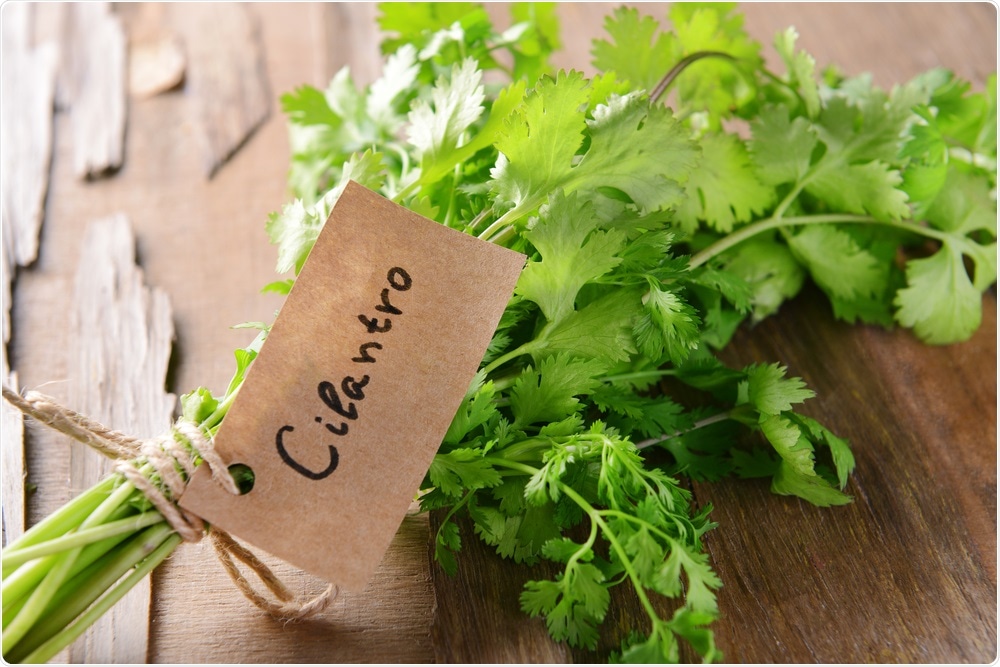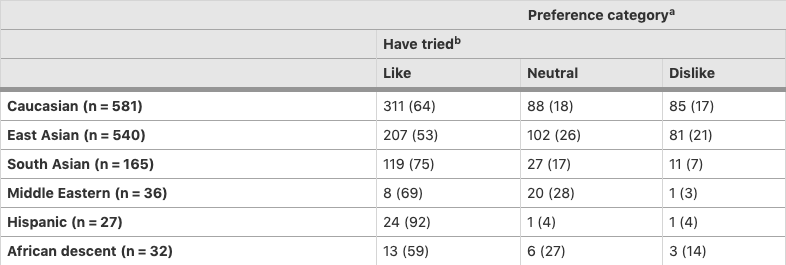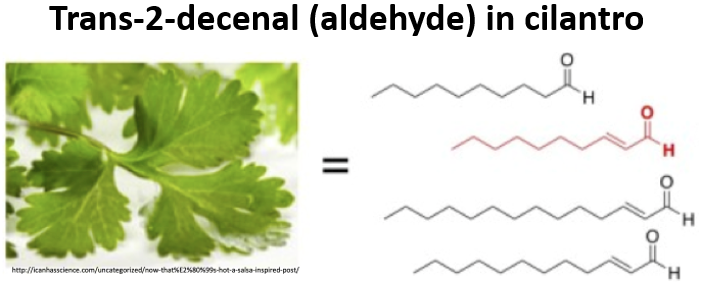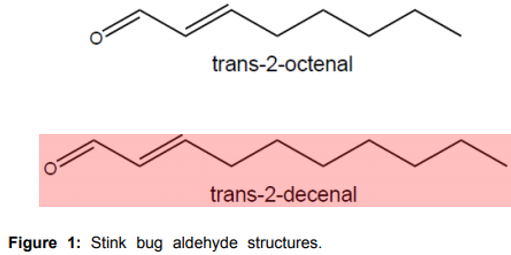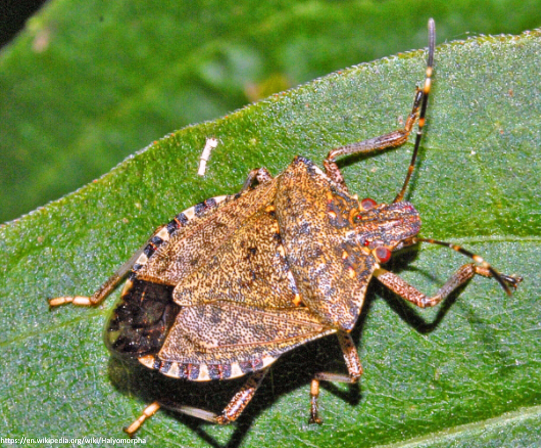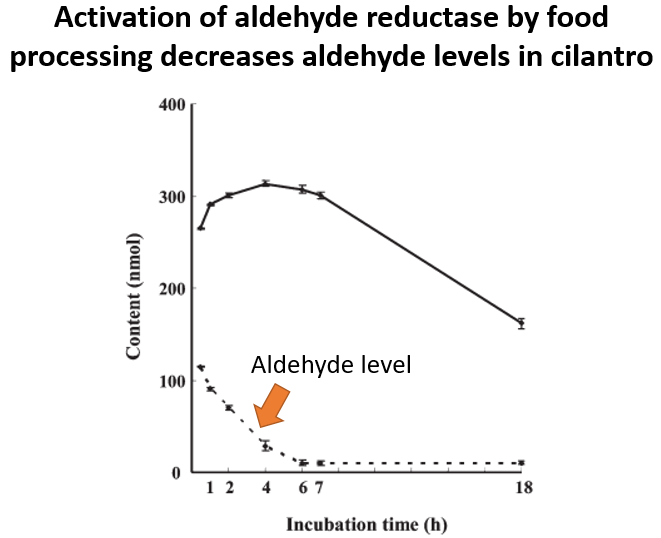1/13
Why does cilantro taste and smell so delicious to some people but like soap (or worse) to others?
Personally, I love cilantro.
Some folks can't even be around it.
Why?
#tweetorial #medtwitter
Why does cilantro taste and smell so delicious to some people but like soap (or worse) to others?
Personally, I love cilantro.

Some folks can't even be around it.

Why?
#tweetorial #medtwitter
2/
The disagreement about cilantro - whether it is delicious or disgusting - is nothing new.
Pliny, the 1st century Roman naturalist, referred to it as having "cooling and refreshing properties".
https://bit.ly/3ebhtRC
The disagreement about cilantro - whether it is delicious or disgusting - is nothing new.
Pliny, the 1st century Roman naturalist, referred to it as having "cooling and refreshing properties".
https://bit.ly/3ebhtRC
3/
Conversely, John Gerard, a 16th century herbalist, called cilantro (aka coriander leaf) a "stinking herb with venomous quality".
His French contemporary, Olivier de Serres, said it "smells like stinkbugs".
Are we even talking about the same plant?
https://online.ucpress.edu/gastronomica/article-abstract/1/2/10/44339/Rehabilitating-the-Stinking-Herbe-A-Case-Study-of?redirectedFrom=fulltext
Conversely, John Gerard, a 16th century herbalist, called cilantro (aka coriander leaf) a "stinking herb with venomous quality".
His French contemporary, Olivier de Serres, said it "smells like stinkbugs".
Are we even talking about the same plant?
https://online.ucpress.edu/gastronomica/article-abstract/1/2/10/44339/Rehabilitating-the-Stinking-Herbe-A-Case-Study-of?redirectedFrom=fulltext
4/
The prevalence of distaste for cilantro varies by ethnocultural group.
 This study found that 10-15% of people dislike its smell and taste.
This study found that 10-15% of people dislike its smell and taste.
 Cultures whose diets feature cilantro more prominently are more likely to enjoy it.
Cultures whose diets feature cilantro more prominently are more likely to enjoy it.
https://rdcu.be/b9zRO
The prevalence of distaste for cilantro varies by ethnocultural group.
 This study found that 10-15% of people dislike its smell and taste.
This study found that 10-15% of people dislike its smell and taste. Cultures whose diets feature cilantro more prominently are more likely to enjoy it.
Cultures whose diets feature cilantro more prominently are more likely to enjoy it. https://rdcu.be/b9zRO
5/
So why do some of us love cilantro and others taste soap when eating it?
 One clue may be a specific aldehyde that is found in the leaves of the herb: trans-2-decenal (shown in red below).
One clue may be a specific aldehyde that is found in the leaves of the herb: trans-2-decenal (shown in red below).
http://ai.stanford.edu/~chuongdo/papers/cilantro.pdf
So why do some of us love cilantro and others taste soap when eating it?
 One clue may be a specific aldehyde that is found in the leaves of the herb: trans-2-decenal (shown in red below).
One clue may be a specific aldehyde that is found in the leaves of the herb: trans-2-decenal (shown in red below).http://ai.stanford.edu/~chuongdo/papers/cilantro.pdf
6/
Aldehydes contribute to cilantro's unique taste.
In a genome-wide association study, those who taste and smell soap w/ cilantro had a specific polymorphism of the OR6A2 olfactory receptor.
 OR6A2 is an aldehyde receptor that binds trans-2-decenal.
OR6A2 is an aldehyde receptor that binds trans-2-decenal.
https://flavourjournal.biomedcentral.com/articles/10.1186/2044-7248-1-22
Aldehydes contribute to cilantro's unique taste.
In a genome-wide association study, those who taste and smell soap w/ cilantro had a specific polymorphism of the OR6A2 olfactory receptor.
 OR6A2 is an aldehyde receptor that binds trans-2-decenal.
OR6A2 is an aldehyde receptor that binds trans-2-decenal.https://flavourjournal.biomedcentral.com/articles/10.1186/2044-7248-1-22
7/
This strongly suggests that variations in OR6A2, and the ability to bind trans-2-decenal, are the source of why some people hate cilantro.
The genetic testing company @23andme even offers OR6A2 variant testing for this purpose.
https://blog.23andme.com/health-traits/23andme-adds-four-new-trait-reports/
This strongly suggests that variations in OR6A2, and the ability to bind trans-2-decenal, are the source of why some people hate cilantro.
The genetic testing company @23andme even offers OR6A2 variant testing for this purpose.
https://blog.23andme.com/health-traits/23andme-adds-four-new-trait-reports/
8/
Recall from tweet #3 that Olivier de Serres said cilantro "smells like stinkbugs".
He actually wasn't wrong. Stinkbugs, aka the insect Halyomorpha halys, release aldehydes to repel predators by scent.
Which aldehyde do they release? Trans-2-decenal.
https://pubmed.ncbi.nlm.nih.gov/27656692/
Recall from tweet #3 that Olivier de Serres said cilantro "smells like stinkbugs".
He actually wasn't wrong. Stinkbugs, aka the insect Halyomorpha halys, release aldehydes to repel predators by scent.
Which aldehyde do they release? Trans-2-decenal.
https://pubmed.ncbi.nlm.nih.gov/27656692/
9/
There is hope, though, for those who don't like cilantro.
One way to mitigate its flavor is to dice or grind it up.
 Dicing activates an aldehyde reductase enzyme in the leaf, which breaks down aldehydes like trans-2-decenal.
Dicing activates an aldehyde reductase enzyme in the leaf, which breaks down aldehydes like trans-2-decenal.
https://pubs.acs.org/doi/10.1021/jf901463p
There is hope, though, for those who don't like cilantro.
One way to mitigate its flavor is to dice or grind it up.
 Dicing activates an aldehyde reductase enzyme in the leaf, which breaks down aldehydes like trans-2-decenal.
Dicing activates an aldehyde reductase enzyme in the leaf, which breaks down aldehydes like trans-2-decenal.https://pubs.acs.org/doi/10.1021/jf901463p
10/
Let's conclude with one final question:
Why do those who hate cilantro often specifically smell and taste soap when encountering it?
Let's conclude with one final question:
Why do those who hate cilantro often specifically smell and taste soap when encountering it?
11/
Saponification (ie soap production) = lipid hydrolysis via heat and sodium hydroxide, which produces fatty acid salts that comprise soap.
Aldehydes, including trans-2-decenal, are byproducts of this reaction and contribute to a given soap's aroma. https://www.ncbi.nlm.nih.gov/pmc/articles/PMC6225244/
Saponification (ie soap production) = lipid hydrolysis via heat and sodium hydroxide, which produces fatty acid salts that comprise soap.
Aldehydes, including trans-2-decenal, are byproducts of this reaction and contribute to a given soap's aroma. https://www.ncbi.nlm.nih.gov/pmc/articles/PMC6225244/
12/
What does this imply?
 When someone says that cilantro tastes like soap, they actually are indeed tasting soap.
When someone says that cilantro tastes like soap, they actually are indeed tasting soap.
What does this imply?
 When someone says that cilantro tastes like soap, they actually are indeed tasting soap.
When someone says that cilantro tastes like soap, they actually are indeed tasting soap.
13/
 Love-hate responses to cilantro arise from different sensitivity to trans-2-decenal
Love-hate responses to cilantro arise from different sensitivity to trans-2-decenal
 This results from genetic variations in OR6A2 olfactory receptor
This results from genetic variations in OR6A2 olfactory receptor
 Trans-2-decenal is also a byproduct of saponification, and those who taste soap w/ cilantro actually are tasting soap
Trans-2-decenal is also a byproduct of saponification, and those who taste soap w/ cilantro actually are tasting soap
 Love-hate responses to cilantro arise from different sensitivity to trans-2-decenal
Love-hate responses to cilantro arise from different sensitivity to trans-2-decenal  This results from genetic variations in OR6A2 olfactory receptor
This results from genetic variations in OR6A2 olfactory receptor Trans-2-decenal is also a byproduct of saponification, and those who taste soap w/ cilantro actually are tasting soap
Trans-2-decenal is also a byproduct of saponification, and those who taste soap w/ cilantro actually are tasting soap

 Read on Twitter
Read on Twitter